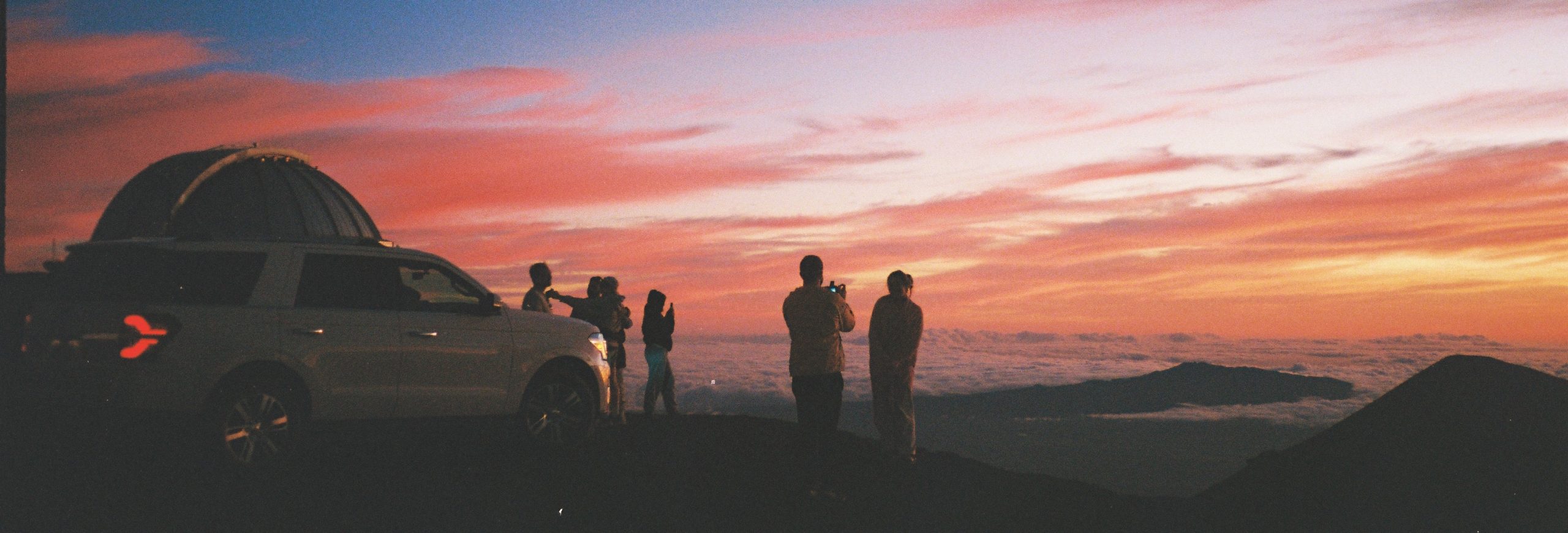

Class of 2025
Maunakea and TMT: The Meeting Point of Scientific Exploration, Tourism, & U.S. Imperialism
I received funding towards my honors thesis project, titled Maunakea and TMT: The Meeting Point of Scientific Exploration, Tourism, & U.S. Imperialism, that I am completing as part of my Program II (Environmental Humanities & Multimedia). This project investigates the ongoing controversy over the intended construction of Thirty Meter Telescope (TMT) on Maunakea, which is a sacred and significant mountain for Native Hawaiians, as well as a valuable site to build telescopes for astronomers. My research questions include: a) How are Native Hawaiians, locals, tourists, and scientists perceiving this controversy differently? b) What roles do visual media depictions of Maunakea and observatories play in different narratives regarding this issue? c) How does this controversy reflect and change ideas of human-nature relationships? And, d) How can I communicate this issue artistically to a bigger audience at Duke and beyond? Prior to this summer, I had little experience with the documentary arts. Realizing this artform conveys crucial and unique perspectives in ways other artforms cannot, I knew I needed to learn and incorporate this in the bigger multimedia piece for my senior thesis project to effectively tackle my goal of urging viewers to rethink their perceptions of Hawai’i, question implicit messages and ideas in media depicting “tourist destinations,” and reexamine consumptive and extractive attitudes towards Hawai’i specifically and nature broadly.
With support from the Benenson family, I was able to take NYU Tisch’s “Documentary Fundamentals” online asynchronous course, and help cover travel, lodging, and food during my 6-week stay in Hilo. I learned about different visual approaches and storytelling methods, and how to use camera and editing techniques to meaningfully convey a message. This course also taught me the landscape of the documentary industry, how to research and edit for documentaries, and the creative process from start to finish. Primed with a new documentarian eye and equipped with my family’s old Canon Powershot and my trusty Olympus Stylus, I recorded footage and took both digital and film photographs during the 6 weeks I spent in Hawai’i with a new intentionality attuned towards the symbolic and metaphoric meanings of what I was experiencing and encountering.

I employed artistic inquiry and creation as a form of knowledge production and a research tool alongside with the archival research, historiographical analysis, textual analysis, participant-observation, and interviewing I was also engaged in. For me, the camera lens became a way to visually capture feelings and connections I was making when reading through historical documents and reports. The camera can capture a type of knowledge that is often too fleeting for the world of academia–the camera acknowledges the inherent subjectivity in any research or academic inquiry. During my three visits to Maunakea, trying to capture what I thought was important with a camera added a layer to my positionality and surroundings. A level of irony was involved–I was trying to document other people documenting their experience on Maunakea. I existed there as a critical and inquiring eye, yet we were all outsiders alike visiting an island illegally occupied by the U.S. This experience necessitated grappling with my relationship to Maunakea and the island, and I am still pondering a correct way to relate exists and what that should entail.
Additionally, I asked interviewees to draw their mental image of Maunakea using colored pastels in a sketchbook I brought along with me. Various respondents depicted the same summit observatories as wart-like, pearls, nondescript lumps, or mysteriously absent from the landscape. To track how the environment has changed over time and how people conceptualize the mountain, I collected scans of historical photographs, postcards, and other depictions of Maunakea from the Lyman Museum archives and from collections at the University of Hawai’i at Mānoa and Hilo.
I am excited to experiment with the art, footage, and photographs I produced/collected over the summer to create a bigger composite multimedia project, and I am extremely grateful for this opportunity, and to have grown as an artist, scholar, as well as a person.